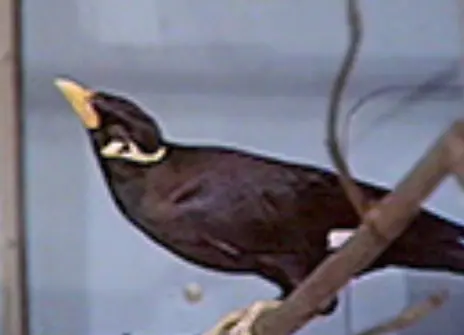Lecture 2 – Be mine
In this Lecture, Sir David Attenborough looks at how animals communicate to find a mate.
Breeding is a natural part of the animal kingdom. Animals need to seek out a mate, with males and females often covering long distances in search of the right mating signal.
Across the animal kingdom, species have developed myriad ways to advertise for a mate. Males possess territory to attract their mates and females have devised ways to announce their presence to the searching male.
When together, animals have further problems to solve particularly when it comes to language. Males need to switch from a language of aggression to one that will encourage a female to stay with them. Oddly, the languages of threat and courtship are remarkably similar. On top of this, there are other more characteristic signals involved in courtship, such as indicating suitable nesting sites, or feeding the mate.
Every species of animal has developed its own special system. These distinctive messages act like passwords, preventing animals of different species trying to breed with one another. It is this language of courtship that has given rise to some of the most beautiful and extraordinary sights and sounds in all of nature.
About the 1973 CHRISTMAS LECTURES
Breaking the cardinal rule of broadcast television – ‘never work with animals or children’ – Sir David Attenborough demonstrates the varied means by which animals convey information to one another and reveals a collection of diverse and complicated behaviours.
From visual signals to distinctive scents, the series explores the vast repertoire of animal language as well as the diverse meaning of messages, whether it be attracting a mate or acting as a warning signal.
As David explains, getting the right message across often means the difference between life and death. Parents communicate with their young, infants signal when they’re in distress and specific colours can signal danger. Other animals have also devised clever deceptions, mimicking the warning signals of others without actually possessing a physical threat.
Language is shown to be a universal tool of the animal kingdom but, asks David, how can we learn what animals are saying to each other and how does their language compare to our own? The series concludes by exploring whether it is possible for us to communicate with animals and if we could ever hope to teach an animal to use a human language.
Help us find the missing CHRISTMAS LECTURES
The fourth lecture in the series, 'Simple Signs and Complicated Communications', is considered a missing a lecture, as there is no known copy of it.
If you do have a copy of the recording, we would love it if you got in touch with us at xmaslectures@ri.ac.uk to help us make all our CHRISTMAS LECTURES available for future generations.





